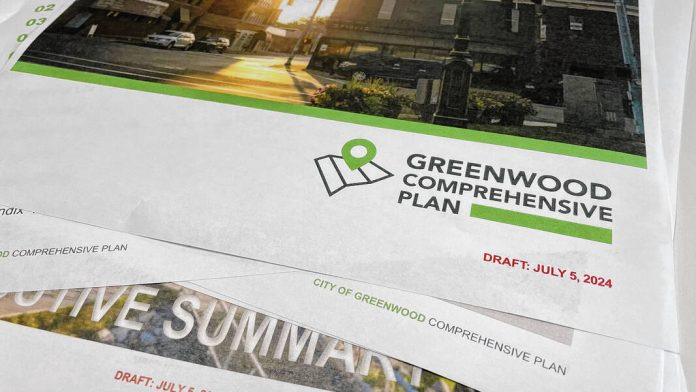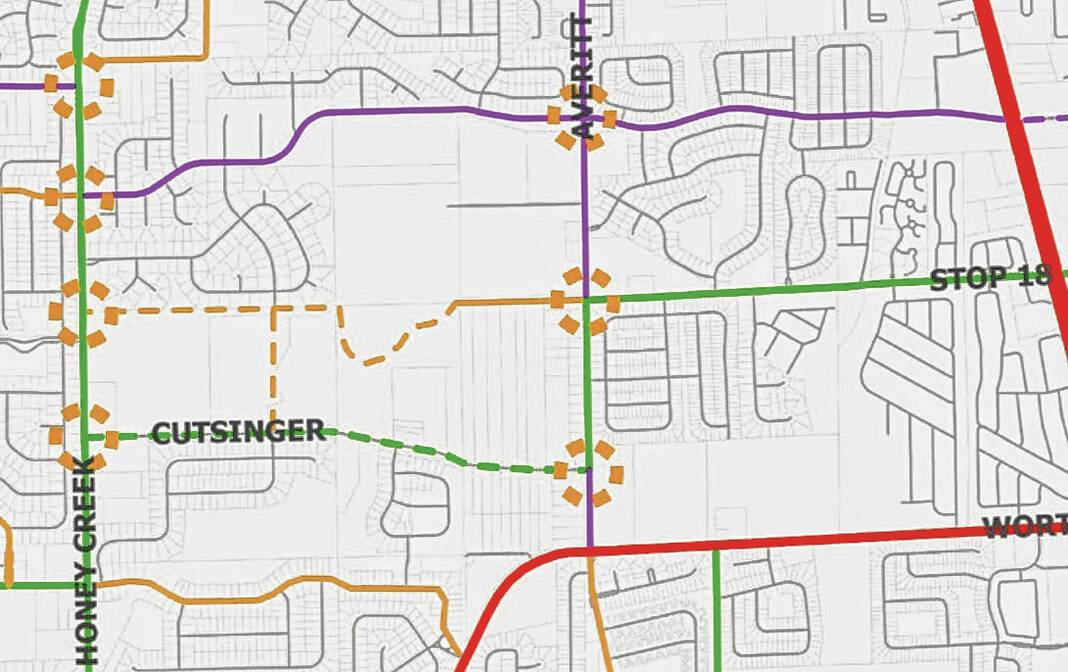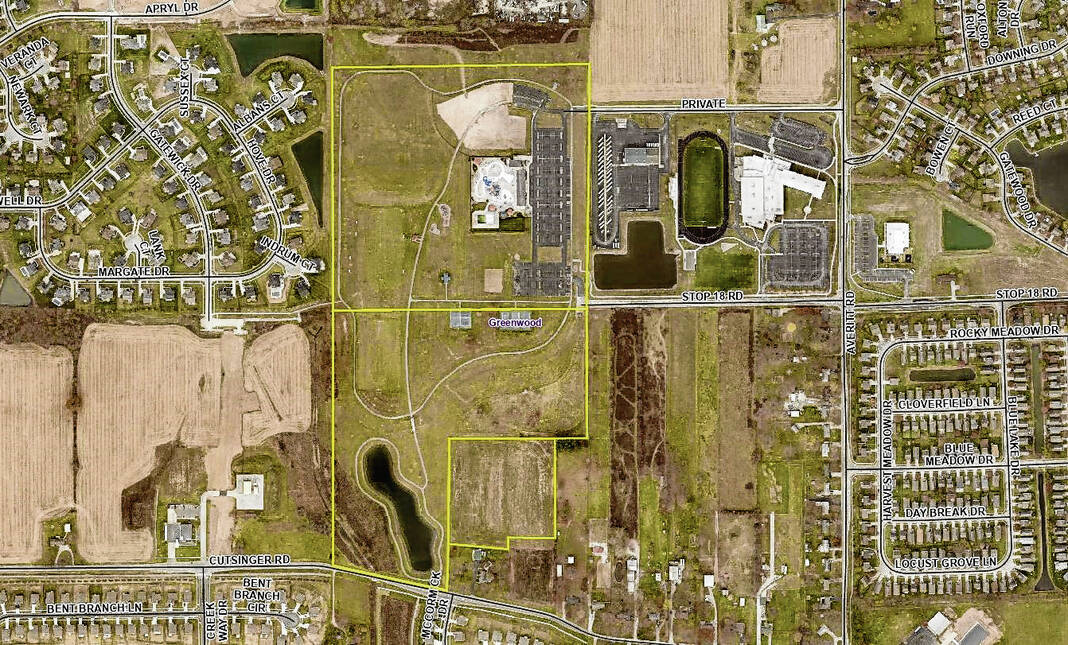Greenwood’s updated comprehensive plan was approved by council members Monday, who also removed a controversial road extension from it.
Council members voted 8-0, with council member Linda Gibson abstaining, to approve the plan with two amendments, following a suspension of the rules to push it through to a final reading. One of the amendments was for the removal of the extension that hadn’t already been built, which passed 6-3 with members Gibson, Mike Campbell and David Hooper against, while the second was to remove language regarding the planning department’s authority to enforce connected streets policies, which passed 6-3 with members Gibson, Campbell and Steve Moan against.
For over a year, officials have been working on developing a new comprehensive plan, which will guide development and growth in the city for the next 10 to 20 years. Throughout the process, the city and consultant HWC Engineering have held several public meetings about the plan to encourage public feedback.
In recent months, residents have turned their focus on an extension of Stop 18 Road through Freedom Park, which officials have identified in plans as far back as 1988. The goal is to add another connection to Freedom Park for residents west of the park.
While there are no immediate plans for this, nearby residents have been concerned about its inclusion. Several residents have disagreed with it, voicing opposition and asking the city to consider alternatives. Several have also said they feel their concerns have been dismissed.
Road extension
Monday’s meeting saw fewer public comments about the extension than past meetings, but most of those who spoke again emphasized their concerns about the extension.
Resident Vince Matthews, who previously spoke out against the extension, told the council most of the feedback comments have been against the road extension. He believed it could harm Freedom Park, adding later that he thought it was “troubling” to have the completion of the road in the plan.
Resident James Workman questioned whether there was a need to run the road through the park. There are already nearby roads that could be used to provide access and/or parking, he said.
He also expressed concerns the road would increase safety risks for those who go to Freedom Park and Freedom Springs.
Council member David Lekse asked to amend the plan to remove the extension because he thought it was unnecessary, citing other access options and residents’ concerns. Before any vote on the amendment could take place, however, Planning Director Gabe Nelson gave a presentation on the need for the road.
Throughout the discussions about the road, city officials have talked about how the plans for it have changed and why they say it’s needed. It now curves more through the park, which officials have said will improve its future safety. It also allows for the parks department to “activate” different areas of the park, including building additional parking lots off the road, Nelson said.
There had also already been infrastructure investment for the road — including a bridge with a pedestrian underpass. Adding the road would’ve increased emergency access as well, he said.
Nelson also compared the planned park road with roads in other parks, like Franklin’s Province Park, Garfield Park in Indianapolis and Mill Race Park in Columbus.
Council member Steve Moan asked whether there were any immediate plans to complete the road. Rob Taggart, the executive director of the city’s parks department, said there wasn’t.
Moan also asked if there were any opportunities to build a road, or parking, off Cutsinger Road instead. Nelson said it could be possible to build a road from north of Greenwood Fire Station 93 to connect with Gatwick Drive in Brighton Estates. This would be through parks-owned land, and is already identified as potential on the plan, he said.
While there are no immediate plans for the extension, including it in the plan could make it more likely to be constructed, Lekse said.
Not all council members were on the same page about removing the extension, however. Council president Mike Campbell said everyone is concerned about safety, but the city already has several areas that have pedestrian pathways that parallel roads.
“I’m not convinced that putting a road next to a pedestrian pathway in and of itself is a safety issue as long as it’s managed properly, there’s enough distance,” Campbell said. “You know, we try our best to control speed, and there’ll be more controls on speed with this road through the park than within our neighborhoods and in our subdivision.”
After the council voted to pass the amendment removing the extension 6-3, Nelson asked them to suspend the rules to push it through to final passage. He asked for this because the Advisory Plan Commission will now need to amend the plan following the council’s amendments. The council voted 7-2, with council members Linda Gibson and David Hopper against.
Planning authority
Before the council could vote on final passage, however, Hopper asked for another amendment to the plan. He wanted to remove a paragraph in the plan regarding planning department authority — specifically to remove a paragraph about connected streets in neighborhoods which he believed gave the planning department more power.
“I’m technically not opposed [to neighborhood connectivity], but instead of giving the planning department more power, I actually think the council should get a little more power,” Hopper said.
Hopper and Nelson had, at times, a testy exchange about the amendment. Nelson said the correct way to address this would be to amend the city’s Unified Development Ordinance, which codifies the power given to the planning department, rather than the plan, which Nelson describes as a guiding document.
“I don’t disagree that the UDO needs adjusted as well, but if we’re using this as the document that guides us and it was to say that staff needs more power in the UDO, I think that needs to come out because I actually think it’s the council that needs more power,” Hopper responded.
Hopper also said he had other typos and clarifications he wanted to bring up. Nelson took issue with this, saying Hopper was on the steering committee for the plan, but Nelson alleged Hopper did not attend most of the meetings and left during one. The meetings would’ve been the time to bring it up, Nelson said.
The section of the plan Hopper took issue with had to do with the planning department’s enforcement power of the UDO. Planning officials wanted to clarify connectivity, which would give “give staff and leadership more direction when reviewing development petitions and subdivision applications,” Nelson said.
Hopper’s amendment brought confusion among council members who were initially unsure of what he wanted to be removed, as he was attending via Zoom and the audio was hard to hear at times in the chamber.
After Hopper explained it was to remove the paragraph about authority and forcing street connections, Nelson responded frankly, saying that it was already in the UDO and it didn’t stop council members from ignoring it by requiring the removal of street connections during the Walker Farms rezoning earlier this year.
“I’m not sure that taking this paragraph out would [stop the council from ignoring it] in the future based on council’s previous actions,” Nelson said.
Council member Linda Gibson asked for legal advice on what the council could do in this situation. Corporation Counsel Sam Hodson echoed what Nelson said earlier, that the paragraph in the comprehensive plan didn’t give the planning department any additional power. Enforcement was already in the UDO, he said.
“If you really want not to have connectivity — which is contrary to all best practices in engineering, civil engineering — you can change the UDO,” Hodson said.
Moan chimed in on this as well, saying Hopper was “rightly saying” that council members need to be aware and understand what the planning department is being directed by the UDO but that wires were being crossed. The paragraph in the plan stated the planning department needed authority to enforce the UDO, and what council members needed to really do was amend the UDO to address connectivity.
“We need to amend the UDO to say, ‘Look, if a connectivity doesn’t make sense, we don’t need to connect there, but we need to encourage connectivity where it makes sense,’” Moan said.
The amendment ultimately passed 6-3, and the plan as a whole ultimately passed 8-0 with Gibson abstaining.







